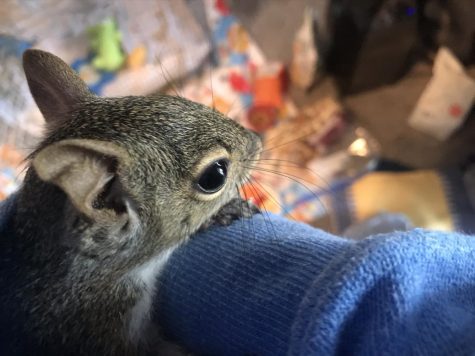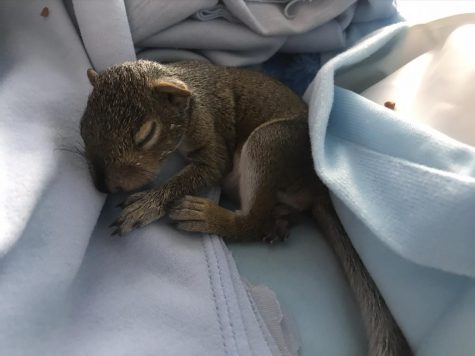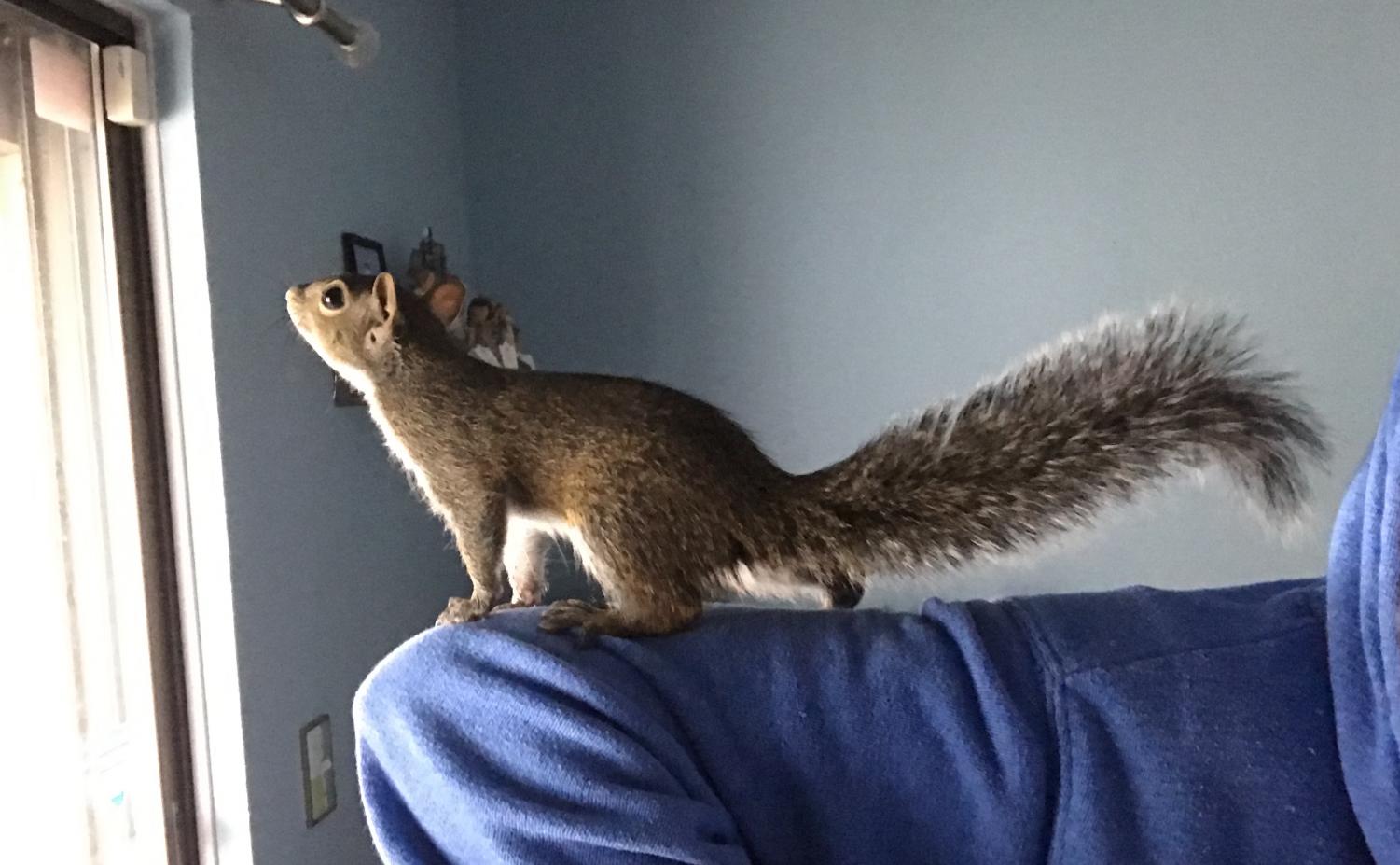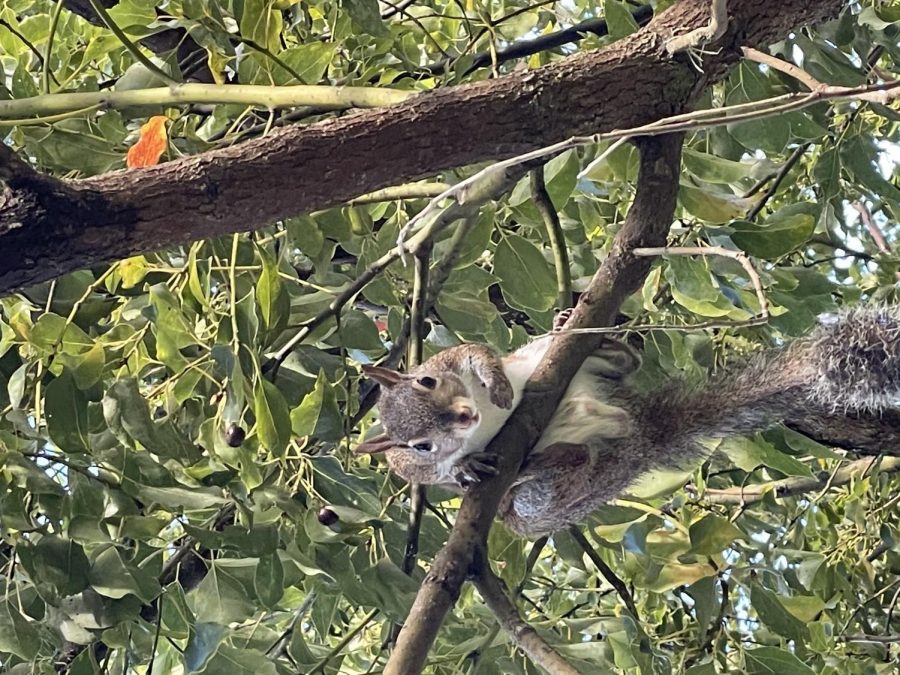Dance Instructor Saves Squirrels
December 13, 2020
You may know Ms. Blackledge as our dance teacher, but if your name is Luke Skyfaller, you have a bushy tail, and an affinity for acorns, you may know Ms. Blackledge as a kind of mom.
In August of 2008, Blackledge’s cat Benny brought Fay, a squirrel between 24 and 48 hours old that had just been blown out of its home, to the Blackledge household. Blackledge said, “I guess it was a prize that Benny wanted to give to the family.”
It is important for squirrel rescue that the foundlings be within the 24 to 48 hour period. Otherwise, the squirrels are too defensive. “You can’t really do anything to help them because they’ll just bite you.” Blackledge said.
While older squirrels pose a threat of biting, none of Blackledge’s foundlings have bitten her.

“Now their claws on the other hand […] are literally like razor blades,” Blackledge said. “Oftentimes in the summer you’ll see Ms. B in a full mask, hat, long sleeves, gloves, long pants, and then they can just go (climb) all over you.”
For over ten years now, Blackledge has taken in and cared for squirrels injured during storms. She has raised seven.
Hurricanes and tropical storms blow squirrel nests out of trees and pose a major threat to baby squirrels everywhere because their nests are fragile. Blackledge said, “If you’ve ever seen a squirrel nest, it’s just little twig after little twig.”
These nests fall apart under the stress of hurricane winds that can sometimes reach speeds of over 150 miles per hour. The vulnerable baby squirrels living in these nests lose the protection of their home and their mother.
Once she was rescued by Benny, Fay enjoyed quality care. care under Blackledge’s protection. Such care included a special diet and unique living conditions. Blackledge said, “with a baby squirrel, you have to have a heating pad for them to be on twenty-four seven.”
Blackledge said feeding had to take place “Every three hours, twenty-four hours around the clock. That means two in the morning and five in the morning every day.”

As Blackledge and the world learned more about squirrel care over the years, baby squirrels’ diets became more high tech. “Years ago, the tradition was just a goat milk… now there’s a specific kind of milk you get from the pet food store.”
Every step in the care routine of these squirrels is made keeping in mind the end goal of releasing the squirrels back into the wild. According to Blackledge, “We want them to be as fearful (of other animals) as we can possibly make them because it’s a rough world out there for a squirrel.”
Along with Fay (named for the hurricane that knocked her out of her home in 2014), Blackledge has raised squirrels named Bear, Annie (named for the Bolles production of the broadway play that was being put on that year), Stevie (who, like his namesake Stevie Wonder, had eye damage when found), and Luke Skyfaller.
Skyfaller, the squirrel currently under Blackledge’s care, is getting close to moving back into his natural habitat. “He was transitioning from the small kennel and the big kennel and I was holding him and he went pew! He was gone.” Blackledge said.
While he is much healthier now than he was when Blackledge found him, Skyfaller may not yet be prepared for the dangers of the squirrel world. Blackledge said “About two and a half days after (he ran off)… he was in his kennel with a little bit of a hurt arm. He was looking at me like ‘shut the door please.’”
After about three-four months of caring for the squirrels, Blackledge releases them back into the wild near where they were found.
Even after the squirrels are no longer under Ms. B’s protection, she still provides for them even after they go back into the wild by leaving out acorns for them.
When asked about how dependent the squirrels are on food laid out for them after being released, Blackledge said “Their first two to three weeks out, dependency in percentages would be about fifty percent. Then it just becomes dessert.”


